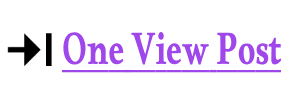In fast-evolving workplaces, processes and even tasks need to be tracked and updated in real-time. However, nobody, especially employees, wants to feel like they’re under constant surveillance. The Controlio app and other similar applications help monitor data efficiently without creeping into the personal space of the employees. Having led teams and been monitored as an employee, I understand how effective work observe tools can be when used with the right balance.

The Potential of Monitoring When Used Gracefully
Strategically monitoring workflows fosters productivity while simultaneously investing in company morale. As insightful as said monitoring may sound, it is akin to having a coach helping workers behind the scenes. Other than ignoring blatant blockers or bottlenecks, it also focuses on identifying gaps for better efficiency in the team. In my earlier management roles, we used project progress tracking tools, and one realization was that employees in most cases possessed the tools required to complete the assigned tasks. Instead of dreading the hours spent delivering results, we provided additional training, and their results skyrocketed post that at the organizational level. All employees should and need to be equipped with the tools to capitalize on workflows that monitoring can provide. Also, it changes the game for security. Companies that deal with sensitive information, like customer records, need to keep watch over potential risks, such as data theft. A colleague from finance once told me that their monitoring system prevented a major data breach by flagging suspicious file transfers. The correct methods, or technologies, can protect your team and your clients without infringing on their privacy.
The Risk of Overreach: Avoiding the Surveillance Trap
Overstepping boundaries when monitoring systems can lead to unwanted complications. Spying is one instance where trust gets broken instantly. I once worked under a system where every click was tracked. Because of this, I had to rethink even taking short breaks. It made us feel dehumanized. Without clearly defined limits, employees can become worried about their privacy, and in turn, trust is lost. A 2023 study showed that it was valued at $349.40 billion in 2023, yet only 32% of firms have a data-backed strategy, implying a majority might be monitoring with no particular aim, which brings distrust and damages longstanding relationships between employees and employers.
Over-monitoring further complicates matters, suffocating managers under avalanches of pointless information. If you’re tracking keystrokes instead of the company’s results, you are missing the main goal of the business. Strategic data should be used as an advantage or leverage to transform or protect the business or firm, not to play busybody.
Transparency: The Key to Trust
To keep the “Big Brother” vibe at bay, explain what and how you are monitoring. Brief your employees on what is being tracked, like their schedules, and how it will help them. During the initial onboarding sessions for the Controlio app, my company held a Q&A about its purpose. They explained its features and made it clear that it was to help optimize schedules, not to police us. That candidness made all the difference; instead of feeling scrutinized, I felt supported.
In your organization, data collected with monitoring devices can be used to improve workflows or identify egregious security breaches. When questions are invited and concerns addressed, employees have a sense of ownership. When employees perceive monitoring as if it is for their success, it fosters a sense of participation instead of surveillance.
Focus on What Matters: Outcomes Over Activity
With effective monitoring, reporting frameworks, systems, and processes also focus on results as opposed to activities. Measuring customer satisfaction or completed projects is a better gauge of productivity than tracking time spent on tasks. In a freelance gig, one of my clients was using a tool to track deliverables instead of mouse movements. With that focus on deliverables, we delivered high-quality work and exceeded their deadlines.
The Controlio app, for example, a type of work observe software, allows users to track important outcomes such as task completion or project milestone achievements. With that feature, it becomes easier for managers to help employees improve specific outcomes instead of micromanaging. It’s about guiding your team instead of counting clicks.
Protect Privacy, Increase Loyalty
Privacy is important and cannot be overlooked. Tracking an employee’s work phone should not invade their personal life, nor should there be any sort of tracking after work hours. I once heard of a company that recorded personal video calls during breaks—yikes! Clear policies and boundaries, like monitoring only work devices during scheduled hours, help avoid such blunders that erode trust and safeguard privacy.
Encourage feedback as well. My colleagues had strong opinions about a certain tool. They raised their concerns during a feedback session, and, to our delight, our manager refocused the tool to only capture project information. That shift changed many people’s perceptions.
Use Data for Motivation, Not Control
Top-tier monitoring tools increase productivity and employee happiness. Data should be utilized to acknowledge important milestones or to offer constructive aid, such as training sessions with employees who need them. I remember my last job and how our manager boosted morale by celebrating achievements with shout-outs at meetings. It felt great and proved that these systems existed to help us thrive.
Bold decisions such as restructuring entire processes or redistributing company resources require data-backed evidence. When monitoring serves the purpose of improvement, it cultivates a positive environment and enhances productivity.
Final Note: Take Care When Monitoring
Employee monitoring can aid productivity, but only if done appropriately and with the proper tools, such as the Controlio app. Balance can be maintained by empowering your team. Respecting privacy, focusing on outcomes, trusting your team, and exercising transparency all help to avoid the Big Brother trap. The goal should be creating a workplace where data drives success, not suspicion. How do you balance trust with monitoring with your team? I’d love to hear!

